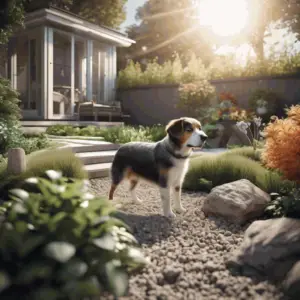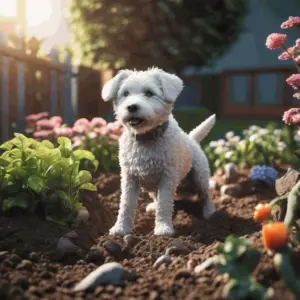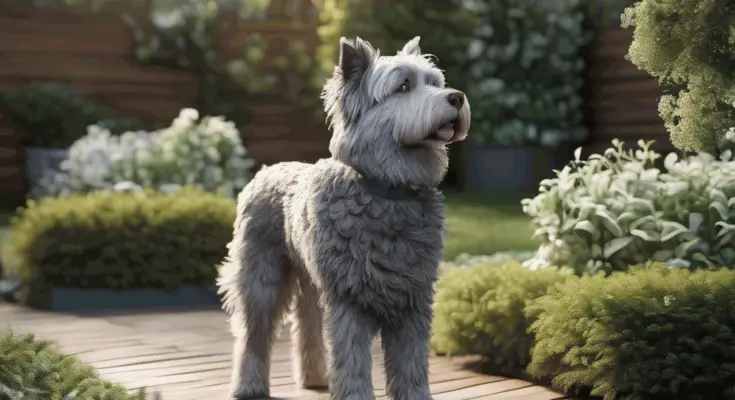Welcome to our comprehensive guide on how to train a small dog and achieve the ultimate goal of a well-behaved and obedient companion. Whether you’re a first-time canine proprietor or searching for powerful preparation strategies, we take care of you. Little canines might be small, however they have large characters, and preparing them requires tolerance, consistency, and encouraging feedback.
In this guide, Train small dog we will provide step-by-step instructions and valuable insights to help you understand train a small dog behavior, Whether you’re a first-time canine owner or fundamentally looking for strong planning systems, we deal with you. Little canines may be little, but they have enormous characters, and setting them up requires resilience, consistency, and empowering criticism.
Key Takeaways:
- Understanding small dog behavior is crucial before starting the training process.
- Creating a positive training environment is essential for successful training.
- Teaching basic commands such as sit, stay, come, and down is a foundation for obedience.
- Housebreaking and crate training are important for training a small dog.
Understanding Train a Small Dog Behavior
Prior to beginning the preparation interaction, understanding the way of behaving of little dogs is significant. Little canine ways of behaving can be impacted by various elements, including their variety, size, and individual character attributes. By acquiring knowledge about their normal impulses and propensities, you can all the more likely locate their particular necessities and difficulties during preparation. Little canines frequently show a scope of ways of behaving that might vary from bigger varieties. Because of their size, they might have an elevated feeling of weakness and depend on various survival techniques. Understanding these ways of behaving will empower you to fit your preparation strategies to their one-of-a-kind necessities.
Here are some key aspects to consider when it comes to small dog behavior:
- Socialization: Small dogs, like their larger counterparts, require proper socialization from an early age.
- Energy levels: While small dogs are generally energetic, their exercise needs may vary from larger breeds.
- Insecurity: Some small dogs may exhibit signs of insecurity due to their size and perceived vulnerability.
- Confidence: Building trust in little canines is essential for their general prosperity. Uplifting feedback and progressive openness to new encounters can assist them with creating confidence and diminish unfortunate or receptive ways of behaving.
By really getting to know these ways of behaving and inclinations, you can move toward little canine preparation with persistence, sympathy, and a custom-made approach that considers their one-of-a-kind requirements.
| Behavior | Description |
| Socialization | Exposure to different people, animals, and environments to prevent fearfulness and aggression |
| Energy levels | Varying exercise requirements compared to larger breeds |
| Insecurity | Possible signs of insecurity due to size and vulnerability |
| Barking tendencies | Vocal nature and reasons behind barking behavior |
| Confidence | Building self-assurance through positive reinforcement and gradual exposure |
Setting Up a Positive Training Environment
When it comes to training a small dog, creating a positive training environment is paramount. By establishing a safe and supportive space for your pup’s learning, you can set the foundation for successful training outcomes. Here are some key elements and techniques to ensure a positive training environment:
-
Consistency is key
A consistent training routine helps your small dog understand expectations and reinforces positive behaviors. Set a regular schedule for training sessions and stick to it, ensuring that everyone in the household follows the same rules and commands.
-
Use positive reinforcement
Uplifting feedback, like treats, applause, and play, rouses your little canine to rehash wanted activities. Compensating appropriate conduct assists with building areas of strength for your little guy and cultivates a cheerful, anxious-to-learn disposition.
-
Provide a distraction-free space
Pick a peaceful and quiet region for instructional meetings, liberated from interruptions that might upset your little canine’s concentration. Stay away from clear clamors, different pets, or over-the-top people walking through the preparation space.
-
Use clear, concise commands
Consistency in verbal orders is significant. Utilize straightforward, straightforward words or expressions that your little canine can perceive and answer. Guarantee that everybody in question in preparing utilizes similar language and signs.
-
Create a comfortable learning environment
Ensure your train small dog is comfortable during training. Use a soft mat or blanket as a designated training area, and provide plenty of water and breaks for rest. Comfort and relaxation contribute to a positive training experience.
By executing these strategies and components, you can establish a positive preparation climate that advances your little canine’s certainty and progress. Keep in mind, persistence and energy are critical to cultivating a polite and respectful friend.
| Key Elements of a Positive Training Environment | Benefits |
| Consistency | Establishes clear expectations and reinforces positive behaviors |
| Positive reinforcement | Motivates your small dog and strengthens the bond between you |
| Distraction-free space | Facilitates focused learning and minimizes potential disruptions |
| Clear, concise commands | Ensures effective communication between you and your small dog |
| Comfortable learning environment | Reduces stress and promotes a positive training experience |
Basic Commands for Small Dogs
Preparing your little canine to answer fundamental orders is fundamental for their security and prosperity. By showing them orders like sit, remain, come, and down, you can guarantee that they adhere to your guidelines and act properly in different circumstances.

Here is a step-by-step guide on how to introduce and reinforce these basic commands effectively:
-
Sit:
Start by holding a treat in your hand above your small dog’s head. Gradually move the treat in reverse, tempting them to follow it with their eyes and normally bring down their backside into a sitting position. When they sit, say “sit” and reward them with a treat and commendation. Rehash this interaction a few times until they partner the order with the activity.
-
Stay:
Begin with your small dog in a sitting position. Hold your hand up, as if signaling them to stop, and say “stay” in a firm voice. Make a stride back and sit tight for a couple of moments prior to getting back to them. If they stay set up, reward them with a treat and commendation. Steadily increment the length and distance as they become more OK with the order.
-
Come:
Start in a controlled environment, such as your backyard or a quiet room. Get down to your little canine’s level, open your arms, and say their name followed by “come” in an excited tone. Urge them to come to you, and when they do, reward them with a treat and commendation.
-
Down:
Begin with your small dog in a sitting position. Hold a treat in your hand and bring it down towards the ground, just in front of their paws. As they follow the treatment, their body should naturally lower into a lying down position.
| Command | Method | Tips |
| Sit | Hold a treat above their head and move it backward | Use high-value treats for motivation |
| Stay | Signal them to stop, step back, and gradually increase the distance | Start with short durations and build up gradually |
| Come | Get down to their level, open your arms, and call their name | Use a happy and encouraging tone |
| Down | Lower a treat to the ground in front of their paws | Patience is key, as some small dogs may struggle with this command |
Housebreaking and Crate Training
Housebreaking and carton preparation are fundamental for little canines. Appropriately preparing your little guy here won’t just bring about a respectful buddy but also establish an amicable living climate for both of you. In this part, we will dive into the significance of housebreaking and how to successfully use container preparation as an important device for potty preparation.
The Importance of Housebreaking
Housebreaking, usually known as potty preparation, is a major part of canine possession. By showing your little canine where and when to ease themselves, you can forestall mishaps inside, keep up with tidiness in your home, and lay out a predictable daily schedule.
While housebreaking your little canine, it is important to be patient and steady. Set an assigned region outside for restroom breaks and consistently reward your little guy for disposing of perfectly positioned. By keeping an anticipated timetable, giving encouraging feedback, and intently overseeing your canine, you will speed up the housebreaking system and layout positive routines.
The Benefits of Crate Training
Box preparing is an exceptionally viable technique for potty preparation and furnishing your little canine with no problem at all space of their own. A box fills in as a cave-like climate, mirroring a canine’s normal sense of looking for sanctuary and security.
While acquainting your little canine with a container, making a positive association is fundamental. Guarantee the container is OK with comfortable sheet material and incorporate toys or treats to make it an enticing space. Progressively increment the term your canine spends in the box, utilizing uplifting feedback and prizes to urge them to eagerly enter.
Managing Accidents and Progress
While housebreaking and case preparation are exceptionally viable, mishaps are as yet conceivable, particularly during the underlying stages. It’s vital to stay patient and reliable when mishaps happen. Immediately tidy up any wrecks utilizing pet-safe cleaning items to eliminate any waiting scents that might draw in your canine back to a similar spot.
Following your little canine’s advancement is vital to grasping their singular requirements. Keep a log of fruitful restroom breaks, mishaps, and any examples that might arise. This data will assist you with refining your preparation approach and changing the timetable or routine if important.
By following the tips and strategies framed in this segment, you will be well-headed to effectively housebreaking and case-preparing your little dog.

Socialization and train small dog
Socialization assumes an essential part in a little canine’s turn of events. It includes presenting your little guy to different conditions, individuals, and creatures in a protected and controlled way. This cycle assists your canine with building certainty, fostering the proper way of behaving and becoming agreeable in various circumstances. By carrying out powerful socialization methods, you can raise a balanced and friendly little canine.
Why is socialization important?
Socialization is critical to guaranteeing your little canine grows up to be cordial, versatile, and tolerating of new encounters. It forestalls conduct issues like trepidation, hostility, and tension. A very much mingled canine is bound to feel good around outsiders, kids, and different creatures, making excursions and connections with others a good encounter.
Strategies for socializing small dogs
While mingling your little canine, it’s fundamental to start early and open them to various improvements progressively. Here are a few methodologies to assist you with the interaction:
- Positive Openness: Acquaint your little canine with various sights, sounds, and scents in a controlled climate. Bit by bit open them to new encounters and applaud them for keeping quiet and loose.
- Encounter with People: Permit your canine to associate with various people, including relatives, companions, and outsiders. Show them how to approach and communicate affably, supporting appropriate conduct with treats and acclaim.
- Interaction with Other Dogs: Orchestrate playdates with polite and inoculated dogs of different sizes to assist your little canine with creating interactive abilities and learning proper play conduct.
- Outings to Public Places: Train small dogs to parks, bistros, pet-accommodating stores, and other public spaces. This openness will assist them with becoming agreeable in groups, various scents, and clamoring conditions.
When to seek professional help
On the off chance that your little canine shows dread, animosity, or extreme uneasiness during socialization endeavors, looking for proficient assistance might be helpful. A certified canine mentor or behaviorist can give direction and assist with fitting a socialization plan explicitly for your canine’s necessities.
Monitoring Progress
Keep a record of your small dog’s socialization experiences, noting any challenges or progress made. This documentation will help you identify areas that may need further attention and celebrate the positive milestones achieved.
| Socialization Strategies | Benefits |
| Positive Exposure | Boosts confidence and reduces fear |
| Interaction with People | Develops social skills and appropriate behavior |
| Interaction with Other Dogs | Encourages good play manners and canine communication |
| Outings to Public Places | Increases comfort in different environments |
Remember that each small dog is unique, and the socialization process may take time and patience. By consistently exposing them to positive experiences and providing support, you can help your small dog become a well-rounded and socially confident companion.
Addressing Common Behavioral Issues
With regards to little canines, it’s to be expected for specific conduct issues to emerge. Whether it’s inordinate yelping, fear of abandonment, or hostility, knowing how to resolve these issues is fundamental for an agreeable relationship with your fuzzy friend.
Understanding and adjusting normal conduct issues in little canines requires persistence, consistency, and uplifting feedback.
Barking
Yapping is a characteristic type of correspondence for canines, however exorbitant yelping can become dangerous. To handle this issue:
- Identify the triggers that cause your small dog to bark excessively.
- Create a quiet climate and give mental and actual excitement.
- Use encouraging feedback to compensate your canine for a calm way of behaving.
- Consider a professional train small dog behaviorist.
“Unnecessary woofing can be a side effect of a basic issue, like trepidation, fatigue, or an absence of socialization. By tending to the underlying driver, you can successfully check the yapping conduct.” – Dr. Jane Smith, Canine Conduct train small dog.
Separation Anxiety
Many small dogs experience separation anxiety when left alone. To help your furry friend cope:
- Gradually increment the time spent separated to desensitize your canine to your nonappearance.
- Create a protected and agreeable space for your canine when you’re away.
- Provide connecting with toys and mental feelings to keep your canine involved.
- Consider the help of an expert coach or behaviorist in the event that the tension endures.
“Understanding separation anxiety is crucial for successfully managing this behavioral issue. By implementing a gradual train small dogs with a sense of security, you can help alleviate their distress.” – Melanie Johnson, Certified Dog Trainer
Leash Training and Walking Etiquette
Walking your small dog on a leash requires proper training and etiquette. It’s important to teach your pup to walk calmly, follow commands, and be a well-behaved walker. Leash training not only ensures your dog’s safety but also enhances your walking experience together.
Training Tips for Leash Training
- Start leash training small dogs indoors or in a quiet, enclosed area to minimize distractions.
- Introduce your small dog to the leash gradually, allowing them to sniff and investigate it.
- Attach the leash to your dog’s collar or harness and let them walk around with it without pulling.
- Practice leash training in short sessions, gradually increasing the duration and complexity of walks.
Walking Etiquette for Small Dogs
While strolling your little canine, it’s fundamental to train small dogs legitimate strolling manners to guarantee a charming encounter for both you and others.
“Strolling manners is tied in with regarding the standards and being obliging of others during your strolls. It establishes a positive strolling climate for everybody.” – Emma Williams, Proficient Canine Mentor.

Tips for Walking Etiquette
- Keep your small dog on a short leash to maintain control and avoid tangling.
- Train small dogs to walk on your preferred side, typically the left, to provide consistency.
- Allow enough space between you and other walkers, cyclists, or joggers on the sidewalk.
- Be mindful of your dog’s behavior around other dogs and individuals. Practice proper introductions and teach your dog to remain calm and friendly.
- Pick up after your dog and dispose of waste responsibly to keep public spaces clean.
By appropriately chain-preparing your little canine and sticking to strolling decorum, you can appreciate wonderful and tranquil strolls while advancing a feeling of the local area and thought for other people.
Advanced Train a Small Dogs
When your little canine has dominated the essentials of compliance preparation, you can take their preparation to a higher level with cutting-edge procedures. Train small dogs High-level preparation not only difficulties your fuzzy companion’s psychological and actual capacities but also fortifies the connection between you and your little guy.
Agility Training
Deftness preparation is an astonishing method for keeping trained small dogs dynamic and intellectually invigorated. Set up a nimbleness course on your lawn or join a neighborhood canine readiness class. Help your little guy to explore through burrows, wind through posts, and hop over obstacles. Not in the least does this upgrade their coordination and equilibrium, however, it additionally assembles certainty and works on generally speaking compliance.
Trick Training
Showing your train small dog cool stunts isn’t just engaging but also intellectually animating for both of you. A few well-known deceives you can show your little canine incorporate putting on an act of being dead, turning over, giving a high-five, or in any event, talking on order. Utilize uplifting feedback and prize-based preparing techniques to make the growing experience fun and agreeable for your little guy.
| Benefits of Advanced Training for Small Dogs | Examples |
| Enhanced Physical Fitness | Agility training, obstacle courses |
| Improved Mental Stimulation | Trick training, puzzle toys |
| Increased Bonding | Shared activities, teamwork |
| Impressive Performances | Dog shows, competitions |
Canine Freestyle
If you’re searching for an imaginative outlet to exhibit your little canine’s gifts, think about canine free-form. This tomfoolery and drawing in action include arranging schedules to music and consolidating different stunts, twists, and developments. In addition to the fact that it gives a magnificent open door to self-articulation, it likewise fortifies the connection between you and your little guy.
Remember, advanced training requires patience, consistency, and positive reinforcement. Celebrate your trained small dog’s progress and always approach training sessions with a positive attitude. Keep pushing their limits, train small dog and watch them thrive in their newfound abilities.
Conclusion
All in all, preparing a little canine requires tolerance, consistency, and uplifting feedback. By following the means illustrated in this aide, you can make areas of strength for your little canine and partake in a polite ally forever.




8 Comments on “How to train a small dog”